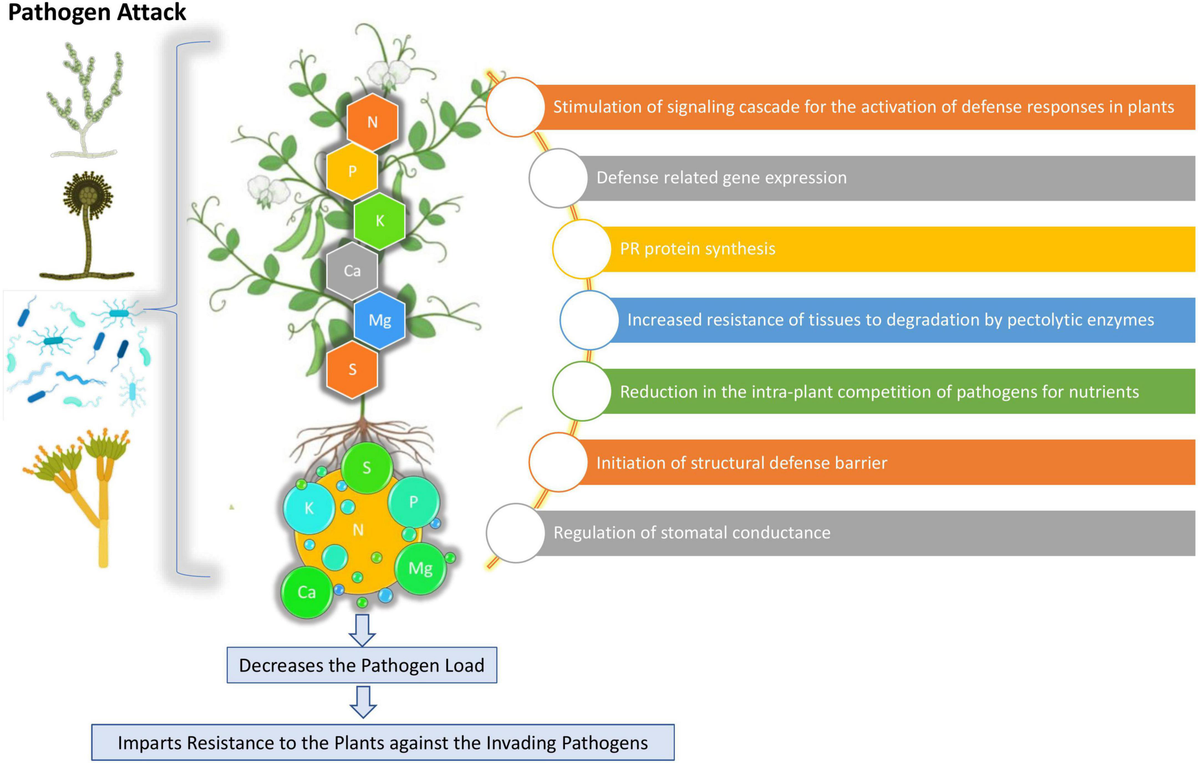It's an interesting concept to consider. If what you are saying is true, then the addition of nitrogen can be detrimental, while the addition K is beneficial.
"N
negatively affects the plant’s physical defense along with the production of antimicrobial compounds"
"Potassium (K) is an essential plant nutrient, when it is present in adequate concentration, it can certainly increase the plant’s polyphenolic concentrations, which play a critical role in the defense mechanism"
Complete and balanced nutrition has always been the first line of plant defense due to the direct involvement of mineral elements in plant protection. Miner...

www.frontiersin.org
"Nutrients like Phosphorus,
Potassium, Manganese, Zinc, Boron and Silicon have been
proven by research to boost plant immunity."
"Potassium and Boron strengthen the cell wall and cell structure
which prevents fungi and other pathogens from entering the cell"
Nutrients like Phosphorus, Potassium, Manganese, Zinc, Boron and Silicon have been proven by research to boost plant immunity. Similarly Salicylic Acid and Jasmonic Acid play an active role in defending the plant against pathogens. Phosphorus is responsible for root development, a healthy root...
dhanashreecropsolutions.com


